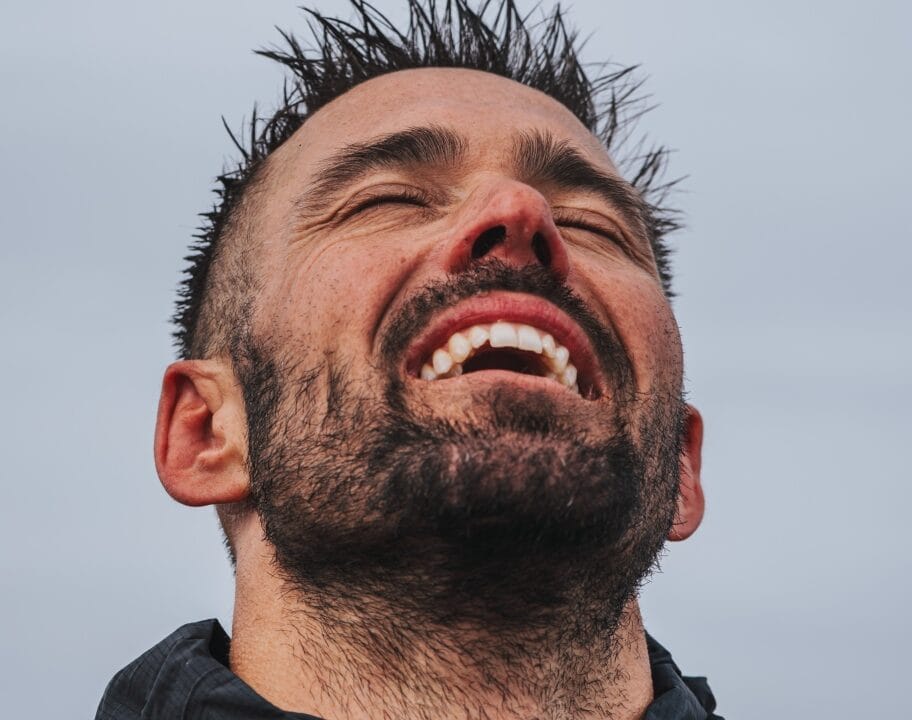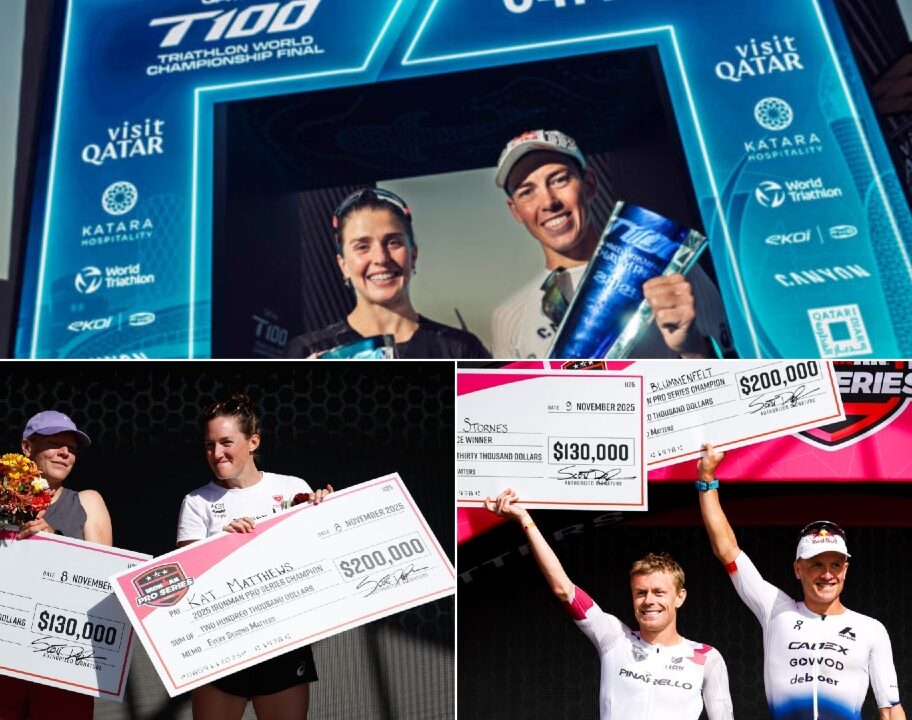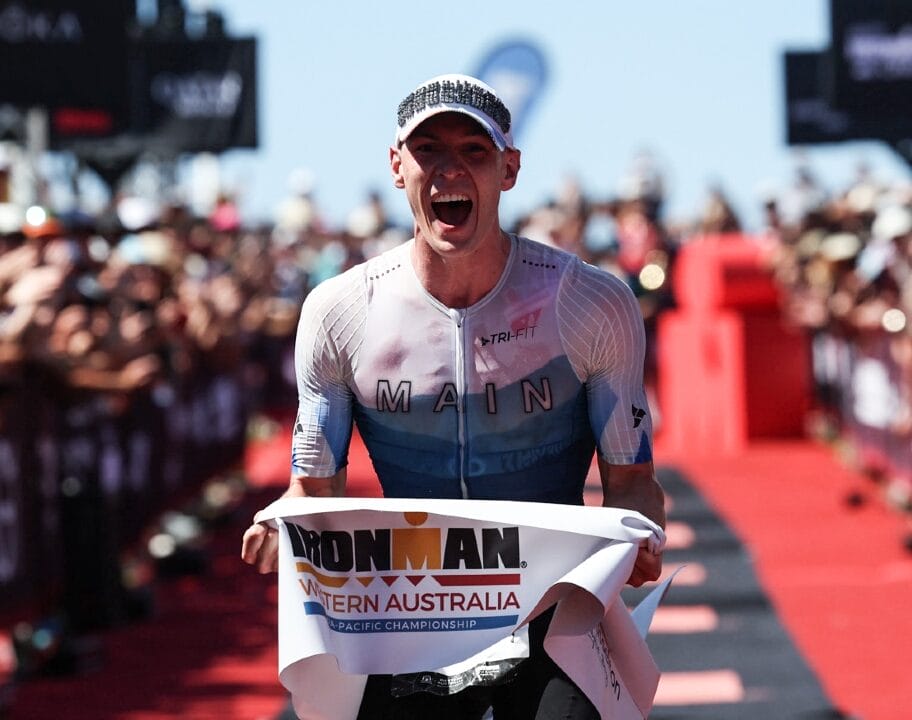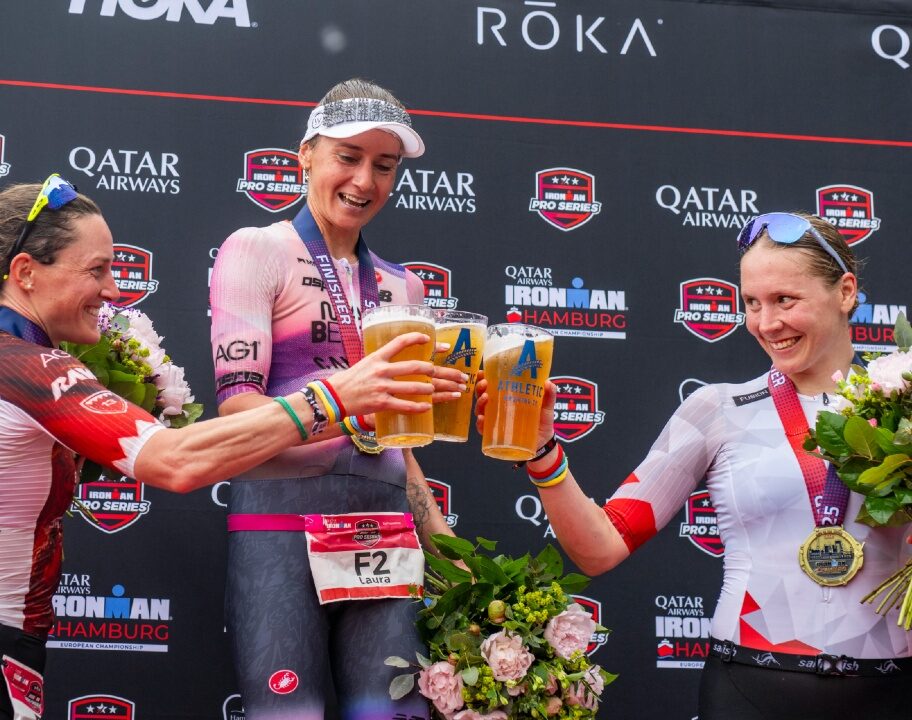The triathlon news cycle in recent weeks has demanded that I take a very zoomed-out look at where the sport sits right now from both a Pro and participation perspective.
From the news that there will be no UK WTCS race in 2024, the reasons behind that and then trying to ‘join the dots’ with some state of the sport thoughts, my increasingly old grey matter has been forced into thinking mode of late. And it’s time to go again.
Triathlon of course is a complex beast, with different formats, distances and objectives – but this week’s big question I am about to tackle is what is the state, and perhaps future, of iron-distance racing?
The context of that of course is driven by the likes of IRONMAN announcing the move of IRONMAN UK, Bolton to a 70.3 from 2024, and the end of IRONMAN Mont-Tremblant. And while IRONMAN is of course by far the market leader in the space, this article is focused on the distance, not solely the M-Dot brand.
Complexity
Before even referencing the state of the economy, the residual impacts of the global pandemic and the aspirations of potential entrants, I think it is worth highlighting one thing that many don’t realise or perhaps take for granted. The organisation of ANY full-distance event is several orders of magnitude greater than even a middle-distance event.
Having worked on many full distance races over the last decade – for both IRONMAN and the Outlaw Triathlon in my particular case – it is a very physically and mentally demanding challenge. And in truth, I only get to see a small element of the logistics, planning, equipment, resources and infrastructure involved as I’ve usually been there a couple of days before, and then depart the next day. I’ve regularly driven home feeling ‘broken’ – and I can only guess at the state of the core team, who still may have days of work remaining, and have been focused on delivery day for the past 12 months.
I spoke to Phil Whitehead, an experienced long-distance athlete and organiser/founder of the popular Lakesman Triathlon in the Lake District of the UK. He confirmed my own findings, admitting: “It’s an exponential scale. From a half to a full, it just goes up to a totally different level, and it’s getting much harder to recruit volunteers.”
For an organiser – be that IRONMAN, Challenge Family or any independent race – I simply tip my hat to the degree of planning, investment and commitment which go in to delivering a successful race on any scale.
I’m putting this right here, front and centre, because it’s very easy to throw a “but all they care about is money” line if and when an event gets discontinued. But bear in mind, if your entrant numbers fall 20/30/40%, your fixed overheads don’t. Or in simple terms, your ability or make a profit and / or simply cover your costs is massively reduced if entry numbers fall – but you’ve still got, pretty much, the same intense workload.
Supply and demand – we are NOT different!
Another ‘setting the scene’ point perhaps, but the reality – for better or worse – is that sport is not immune to the peaks and troughs of the market. In the same way that cars, electronics, housing, luxury goods etc are subject to the highs and lows of supply and demand, it is naive to think that sport – certainly on a participation level – is ‘different’.
In the context of long-distance racing in particular, referencing back to my first point, with so much investment and commitment needed then it is no surprise that if the ‘market’ is telling you that’s there’s also no return, then you can’t be surprised if the event calendar changes.
If we take the UK as an example, looking back to circa 2012/13, there were four ‘big’ iron-distance races on the schedule. IRONMAN UK (Bolton), IRONMAN Wales (Tenby), Challenge Henley and the Outlaw Triathlon (Nottingham). As of today, only two of those (Tenby and Nottingham) we believe will run in 2024. Challenge Henley relocated to become Challenge Weymouth (2014 and 2015), was sold to become IRONMAN Weymouth (2016), and since 2017 has run in IRONMAN 70.3 format. Bolton of course will switch to 70.3 format from 2024 too.
In summary, ‘things change’ – and I don’t expect that to… change any time soon.

Squeezed from both sides?
Despite exceptional athlete reviews, Phil and his Lakesman team held their final full-distance race, for the forseeble future at least, in June this year. The Lakesman continues from 2024 onwards with the existing middle-distance race, alongside two new swim/bike and bike/run options. In coming to that decision, he outlined some of the changes which would be far from unique to their situation.
“We feel that it is two distinct parts, that are separate from each other. As event organisers, there’s a lot of pressure on in terms of costs, both post-COVID and post-Brexit. And we also see market changes from an athlete perspective, and so trying to get those two to work together, and then still put on an event that can successfully wipe its feet or make some money, while also putting on a great event for the athlete, is really tricky.
“We are calling it the COVID lag. Athletes don’t want to enter as far in advance as they used to, as they have got out of that cycle of planning, or having to plan, a year out. Until COVID, you really had to plan in advance. So Staffordshire 70.3 sold out, Lakesman was selling out, Outlaw Half sold out in record time and IRONMAN Wales would sell out in a day, things like that.
“I think we all had to adapt after COVID, and be much more flexible with our terms and conditions, listening to athlete feedback etc. We’ve seen of course the flack that some organisers took in the way that they dealt with those things. With those flexibilities still in place, some of that pressure has been taken away from the athletes… but new pressures on the organisers have increased in the opposite direction.
“In the past I would have maybe done the PowerBar order in May [Ed. for a June race], but that now needs to be done in January to get it through the factory and through customs. So there’s pressure from that Brexit side of things to buy and pay for things a lot earlier, while the athletes are entering a lot, lot later. So, for example, we are having to commit to a big spend on say transition bags in September 2023, on a guesstimate of how many athletes we might get in June 2024.
“Having gone through the COVID period, I think a lot of organisers – if they are still there – have had to use their reserves to survive, so that slack is not there. That puts you under pressure, and those pressures must be really stressful in this market place for those that have salaries and more off the back of it to find.
“When we started Lakesman, we said right at the outset we wanted to be different and to force change, implement stage payments, catering for people differently and looking at the costs involved. We feel like we did that, but now to pass the costs on to the athletes to maintain that standard and keep the full distance on, just wasn’t justifiable with the numbers that we get. We just can’t pass on a near IRONMAN cost for people to do a 200 / 300 person event. It wouldn’t feel right; that’s the athlete in me is thinking that I wouldn’t feel like I’m part of a big event any more.
“We feel like we are in this lull now, the bottom of the trough so to speak, and hopefully we are going to see it pick back up and people will do the halves this year, next year and look to come back to the full distance racing after that.”
Clubs and COVID
Phil referred to the increasing difficulty in recruiting volunteers, and I think that also has close links to how that COVID lag has impacted the club system. Here’s my take:
In any normal year, there would be a proportion of the active triathlete population who leave the sport – retired, moved on to other pastimes, the normal ‘churn’. Similarly, you would have a flow of new athletes into the sport, often through the club system. If the new entrant numbers are bigger than the ‘departing’, there’s net growth etc.
Within the lockdown period, it’s seems reasonable to believe that the rate of people departing the sport, as a result of limited event opportunities, restrictions on triathlon / sports club activities and access to training facilities (e.g. swimming pools), was higher than normal. Some of that ‘excess’ will never return, having found new interests within those new normal times.
That was then compounded, since as well as more people departing, there will have been a period with fewer ‘newbies’ joining the fold too. While we are now – hopefully – in a post-pandemic world, we are absolutely not out of the effects of that extended period. Phil referenced seeing around four triathlon clubs folding in his local area alone over this challenging period.
Applying that to long-distance racing specifically, while it is not unusual for relative newbies to take on full-distance racing, the entrant profile would more typically reflect at least a few years of working towards that. As a result, it makes sense to me that the impact will have hit long-distance entries hardest, and take longer to unwind. That ‘COVID lag’ terminology, I feel, is a real thing.
Uncertainty at the top
While the focus here is on the iron-distance, you can’t escape the fact that IRONMAN is the dominant player in the long-distance market. The jewel in the crown is the IRONMAN World Championship, for many the single best known event in the sport, and right now we don’t truly know how the changes announced last year – a two venue World Championship – will impact the wider sport.
I wrote an extensive article last year on how we got to this two-venue situation – and I think that’s all still pretty solid – but the next couple of months will start to tell us more about the degree to which this will be accepted, embraced (or not) by the masses, as well at the Pro athletes.
Change – in anything – is always difficult, often resisted, but often only time will tell if it has been successful. There have been plenty of opinions shared on all sides, some positive, some negative. Far more important than any question of who is ‘right’, is that for everyone in long-distance triathlon, M-Dot or not, a successful IRONMAN World Championship format(s) is a hugely positive thing which benefits everyone.
Looking back on that piece that I wrote last year, I’m struck by this quote from outgoing IRONMAN CEO, Andrew Messick, that he made several months earlier at the IRONMAN World Championship St George press conference:
“I think as we look at the growth of IRONMAN around the world, the number of qualifying races, I think having two days of racing for the future of the IRONMAN World Championships is going to be critical. We are going to have that, and we’ll have for the first time an experiment where we are going to race on Thursday and Saturday in Kona. We are in discussions now with Hawaii and are hopeful of a long-term solution that enables us to have two days of racing at Kona.”
There was a key word in there. Hopeful.
It was ballsy statement at the time, both in the sense of IRONMAN growth, but notably in a belief that the two-day format could be more than a one-off, COVID recovery plan. When that hope evaporated, the revised two-venue Nice-Kona plan now has a feeling of watching the roulette wheel spinning and hoping that it lands on the right colour, having pushed forward a significant pile of casino chips on the result.
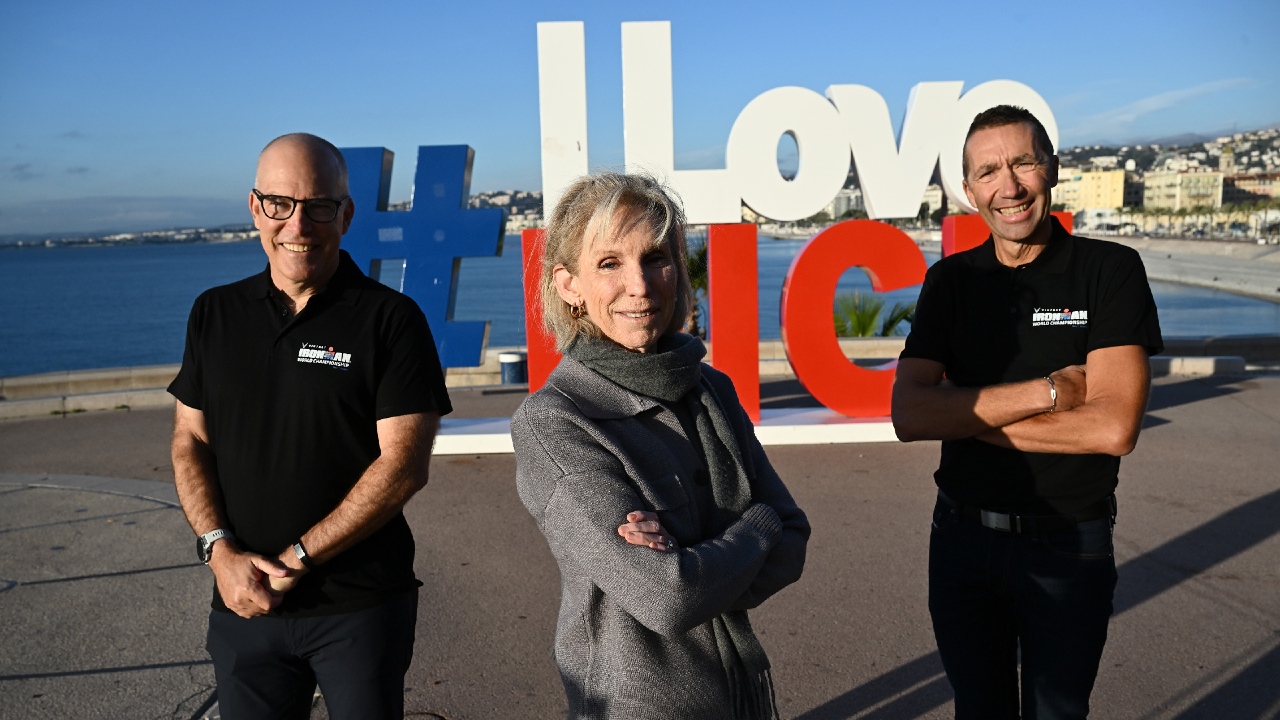
With Messick retiring, will his successor be collecting the metaphorical ‘winnings’ of that decision, or be starting a rebuilding plan?
Perhaps more specifically, the question will be whether athletes want to race the IRONMAN World Championship, or whether they want to race the IRONMAN World Championship in Kona.
Venues matter
Perhaps more than short-distance events, my experience and perception is that finding the ‘right’ venue for an iron-distance race can be critical to success.
What’s interesting, is that often that venue doesn’t need to be big / iconic / famous. Buy-in from a community, welcoming hosts, an interesting course can all play a part. And that is not an easy formula to discover.
Challenge Roth in Germany is one of the most highly-regarded triathlon events in the world, beloved by Pro athletes and selling out for 2024 in 40 seconds to the masses. A quick Wikipedia search tells me that Roth has a population of a little more than 25,000, and yet the eyes of the triathlon world are on small Bavarian town every summer. That’s not an easy thing to replicate!
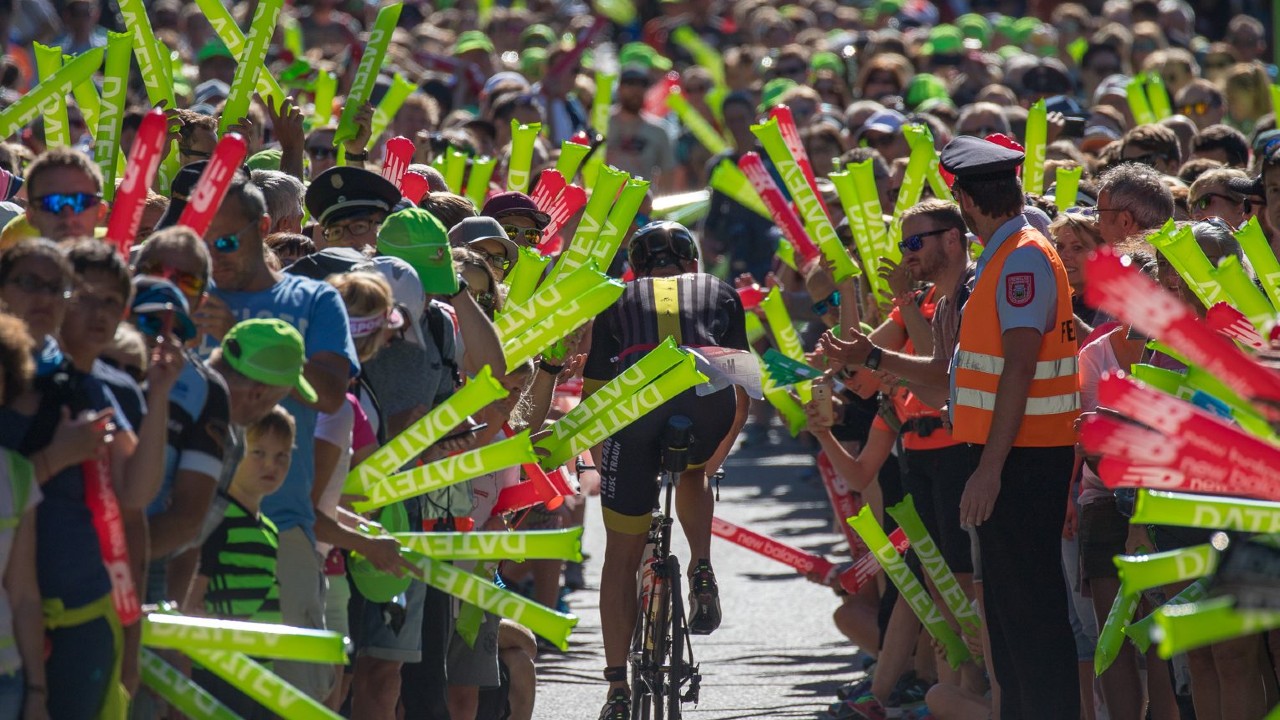
The buzz you get at events like Klagenfurt, Kalmar and Tenby is also something special from my personal experiences – but not every location, in truth, can provide the same je ne sais quoi. It can take a long time to build a history, a legacy and a product which competitors, volunteer and spectators strive to be a part of. Very rarely – if ever – does it happen overnight.
The Ashes effect?
Having noted that I feel that we shouldn’t, or can’t, divorce sport from the normal commercial concepts of supply and demand, I think referencing against other sports can also provide some great analogies too.
I was struck recently by the impact and profile of The Ashes series here in the UK. For our global audience, that’s the biennial Test cricket series between England and Australia. Professional Test Match cricket takes five days per match, typically with a Series between nations comprising of between three and five matches (as per The Ashes).
For many years there have been discussions about the long-term sustainability of that longer format in a world increasingly moving to short(er) forms of entertainment. Cricket has adapted, with initiatives like Twenty20 (T20) and The Hundred, which are a far easier ‘sell’ to the casual fan. They last a maximum of few hours rather than up to five days.
With The Ashes however, the history of the England / Australia rivalry adds to the prestige, and then when – as we saw this summer – the matches are incredibly competitive, closely fought and with exciting finishes and controversial moments, the grounds are packed with spectators and the viewers buying in to the magic of Test cricket.
In essence, I think what we will continue to see is a move towards long-distance racing becoming these high-profile moments. In the same way that different formats have eaten some of the lunch of the global Test cricket market, those marquee events – England vs. Australia, India vs. Pakistan etc, thrive in the way that a Roth, Kona and a smaller number of those select events which have that extra stardust also do.
PTO position
On a professional level, in the short-term at least, I can’t currently see a major catalyst which is going to materially change the racing landscape in a financial sense.
The Professional Triathletes Organisation, via their new Executive Chair Chris Kermode, were pretty clear earlier this year on their current approach to longer0distance racing given their current broadcast-focused strategy:
It’s drawing that balance with what a media partner can take. Instinctively, I think if you said to a media partner, hey, we’ve got this great product, it’s eight and a half hours or something, they’re going to go, I don’t think so.

Of course, that’s absolutely not what the likes of Joe Skipper want to hear – as he’s been vocal about – but it feels to me that on the professional side of long-distance racing, the volume of opportunities will reside in the 100K / 70.3 / half space, with those ‘Ashes’-like moments providing a limited number of highlight moments for the iron-distance specialists.
Summing up
So, how would I wrap this all up? Remembering of course that this is just my considered opinion (N=1), my takeaways are:
- The ‘COVID lag’ has likely hit full-distance racing hardest
- It will also take longer to fully recover from on a mass participation level
- Because of that, I wouldn’t be surprised to see a few more events discontinue and/or adjust
- That is likely needed, to bring supply into line with demand. Less is more?
- As in life, the strongest (events) will survive
- Don’t expect entry to costs to magically fall – it’s a complex business
- Full-distance racing will continue to provide some of the biggest highlights of the season – but expect ‘The Ashes’ analogy, if anything, to become more relevant
- The biggest question mark outstanding, is likely the implementation and feedback of the new IRONMAN World Championship split venue structure, as a healthy sport needs its headliner to be sparkling.







